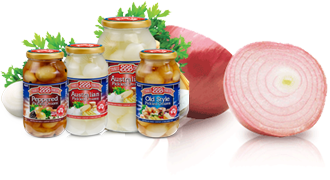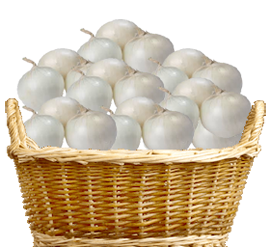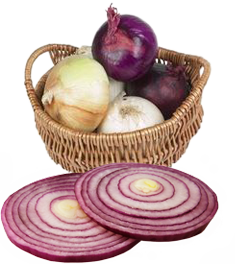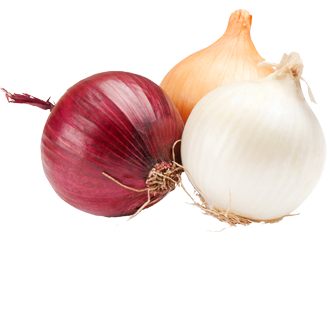Welcome To Onionking
Onions are the third most consumed fresh vegetable in the Unites States and available in grocery stores all year long. Ranging in size from less than one-inch in diameter to over 4.5 inches in diameter, bulb onions can be yellow, red, or white in color.
How to Store Onion Whole dry bulb onions should be kept in a cool, dry, dark place with plenty of air movement. Do not store onions in plastic! Lack of ventilation will reduce their storage life. Refrigeration is only necessary when trying to extend the shelf life of sweet or mild onion varieties with high water content, but be sure to use a low humidity setting, they must be kept dry.
Whole peeled onions should be refrigerated after purchasing.
Cut onions can be stored in a sealed container for up to 7 days.
If you buy pre-cut onions, always keep refrigerated and use before the expiration date.

Products
Common onions are normally available in three colour varieties. Yellow or brown onions (called red in some European countries), are full-flavoured and are the onions of choice for everyday use. Yellow onions turn a rich, dark brown when caramelized and give French onion soup its sweet flavour. The red onion (called purple in some European countries) is a good choice for fresh use when its colour livens up the dish. It is also used in grilling and char-broiling. White onions are the traditional onions that are used in classic Mexican cuisine. They have a golden colour when cooked and a particularly sweet flavour when sauted.
Resources
Onions are best cultivated in fertile soils that are well-drained. Sandy loams are good as they are low in sulphur, while clayey soils usually have a high sulphur content and produce pungent bulbs. Onions require a high level of nutrients in the soil. Phosphorus is often present in sufficient quantities but may be applied before planting because of its low level of availability in cold soils. Nitrogen and potash can be applied at intervals during the growing season, the last application of nitrogen being at least four weeks before harvesting.






 +91 94284 94707
+91 94284 94707

